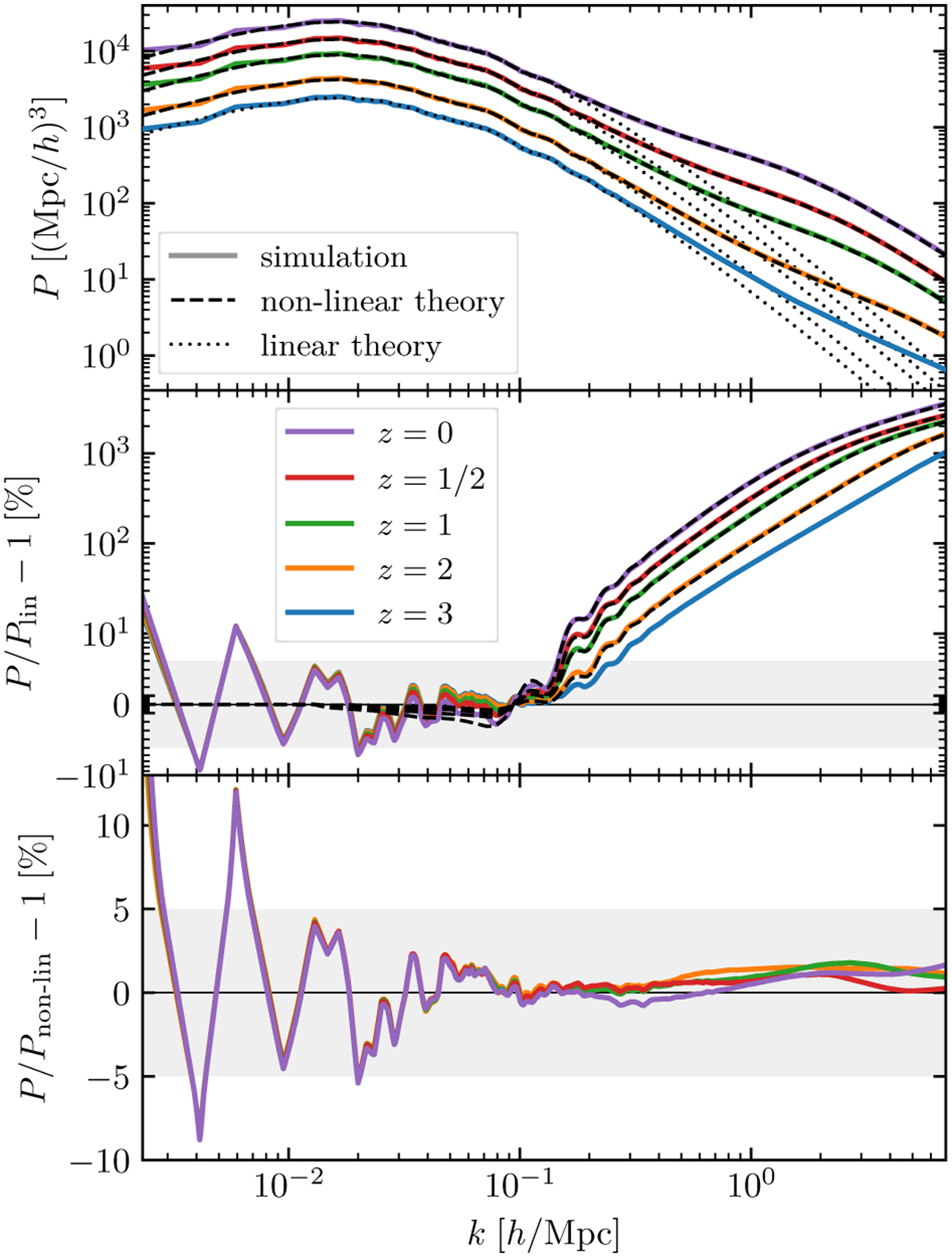Fig. 1

Download original image
Nonlinear power spectrum at various redshifts compared to linear theory from CLASS (Lesgourgues 2011). The use of the forwardscaling method in the N-body gauge (Fidler et al. 2019) allows the N-body simulation to agree with linear theory at all redshifts including the effects from weak field general relativity, radiation, and massive neutrinos. The narrow ±5% band is plotted using a linear scale, making those fluctuations more visible and allowing also for negative values. Fluctuations at low k are statistical and reflect the sample variance of the particular realisation. At high k the enhanced power is due to nonlinear growth of structure not captured by the linear theory. This nonlinear contribution also includes the slight −2% dip at k ≈ 10−1 h Mpc−1, corresponding precisely to the first BAO peak in the power spectrum. The forward-scaling method used for the Flagship simulation guarantees a match to the linear theory of CLASS at all redshifts, which was not possible to achieve with the traditional back-scaling technique (which only guarantees this at z = 0 in the presence of massive neutrinos and radiation). The bottom panel compares the power spectra to the Euclid Emulator nonlinear power spectrum (Euclid Collaboration: Knabenhans et al. 2021).
Current usage metrics show cumulative count of Article Views (full-text article views including HTML views, PDF and ePub downloads, according to the available data) and Abstracts Views on Vision4Press platform.
Data correspond to usage on the plateform after 2015. The current usage metrics is available 48-96 hours after online publication and is updated daily on week days.
Initial download of the metrics may take a while.


